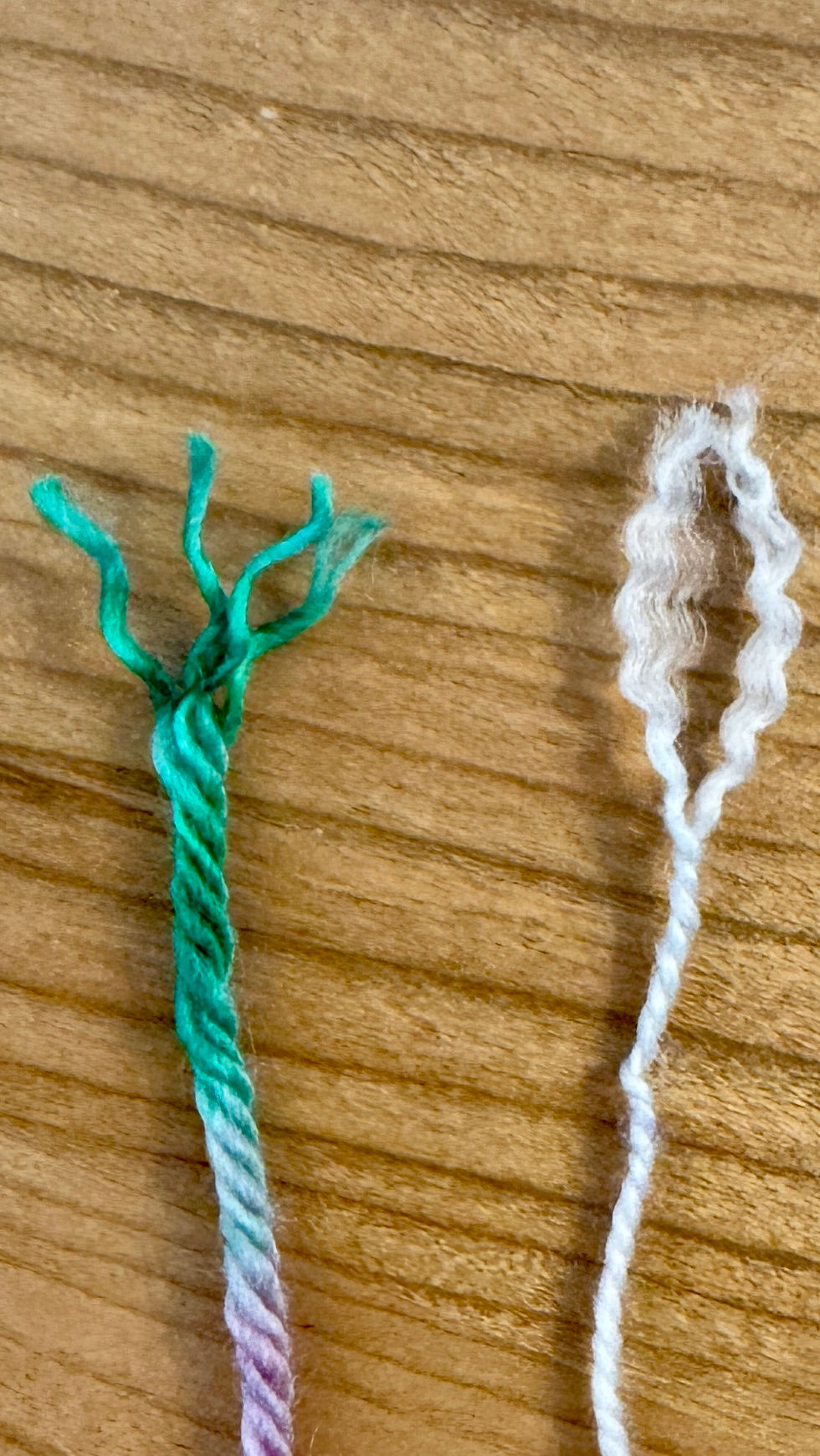🧶 What Is Yarn Ply—and Why It Matters for Your Next Project
- Stephanie
- Jul 30
- 3 min read
If you’ve ever shopped for yarn and seen terms like “2-ply” or “4-ply” on a label, you might’ve wondered—what exactly does that mean? Is a higher ply better? Does ply matter for knitting or crochet?
Let’s unravel it together.
🧵 What Does "Ply" Mean in Yarn?
Simply put, ply refers to the number of strands that are twisted together to make the yarn. Each of those strands is called a “single,” and when two or more singles are spun together, you get a plied yarn.
So:
2-ply yarn = two strands twisted together
4-ply yarn = four strands twisted together
and so on!

But here’s the twist (pun intended): ply doesn’t always equal thickness. A 2-ply yarn can be thick or thin depending on how the singles were spun. So while ply used to be a shorthand for weight (especially in the UK), that’s not always the case today—especially in the hand-dyed world.
✨ Why Ply Matters
Ply affects more than just how a yarn looks—it influences everything from texture and stitch definition to drape and durability.
Here’s how:
🌀 Texture & Twist
A higher ply (like 4- or 6-ply) often creates a rounder, smoother yarn with great bounce.
A lower ply (like single-ply or 2-ply) can feel loftier, softer, or even slightly rustic depending on how it's spun.
🧶 Stitch Definition
Cables and lace pop in tightly twisted 3- or 4-ply yarns—they hold structure and show off intricate patterns.
2-ply yarns can create a slightly “fuzzier” look, which softens edges and adds a more organic, handmade feel.
🧵 Drape & Fabric Feel
Fewer plies generally lead to more drape—great for shawls or flowy garments.
More plies = more structure—great for socks, sweaters, and anything that needs to hold its shape.
🧦 Durability
More plies often mean more durability—especially important for high-friction items like socks, mittens, and hats.
🤔 How to Choose the Right Ply for Your Project
There’s no one-size-fits-all answer, but here are a few tips:
Project Type | Recommended Ply | Why |
Lace shawl | 2-ply or single-ply | Soft, airy drape |
Cabled sweater | 3- or 4-ply | Crisp stitch definition |
Cozy hat or cowl | 2- or 3-ply | Balance of warmth and structure |
Socks or mittens | 4-ply or higher | Extra durability |
Textured crochet | 3- or 4-ply | Helps stitches stand out |
At Greenstone Yarn, we carry a range of plys—from softly twisted 2-ply yarns that bloom beautifully after blocking, to tightly spun 4-ply options ideal for long-lasting garments. Whether you’re knitting your first shawl or crocheting a cozy sweater, we have something to suit your project’s personality.
🧶 A Few Ply-Related Tips
Swatch first. Some yarns behave differently in the skein vs. in fabric—especially when blocked.
Check your pattern. Some designers specify ply, while others recommend a yarn weight and leave ply up to you.
Think about wear and tear. Are you making something delicate or something meant to be worn often?
🛍 Ready to Choose Your Yarn?
Browse our hand-dyed yarn collection to explore beautiful 2-ply and 4-ply skeins, crafted with care to match your project’s needs. 💚
And if you're not sure which ply—or base—is right for your next make, feel free to reach out. I'm always happy to help you find the perfect yarn match.










Comments